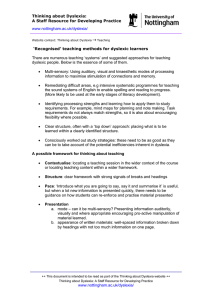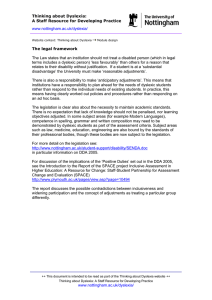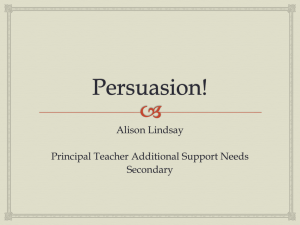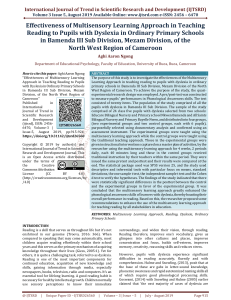Dyslexia Common Difficulties: Reading Skills Confusion of similar
advertisement
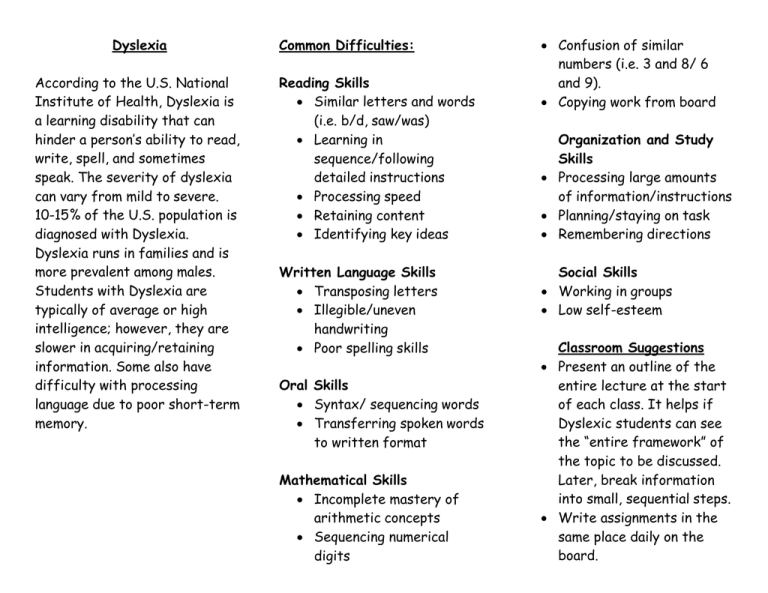
Dyslexia According to the U.S. National Institute of Health, Dyslexia is a learning disability that can hinder a person’s ability to read, write, spell, and sometimes speak. The severity of dyslexia can vary from mild to severe. 10-15 % of the U.S. population is diagnosed with Dyslexia. Dyslexia runs in families and is more prevalent among males. Students with Dyslexia are typically of average or high intelligence; however, they are slower in acquiring/retaining information. Some also have difficulty with processing language due to poor short-term memory. Common Difficulties: Reading Skills Similar letters and words (i.e. b/d, saw/was) Learning in sequence/following detailed instructions Processing speed Retaining content Identifying key ideas Written Language Skills Transposing letters Illegible/uneven handwriting Poor spelling skills Oral Skills Syntax/ sequencing words Transferring spoken words to written format Mathematical Skills Incomplete mastery of arithmetic concepts Sequencing numerical digits Confusion of similar numbers (i.e. 3 and 8/ 6 and 9). Copying work from board Organization and Study Skills Processing large amounts of information/instructions Planning/staying on task Remembering directions Social Skills Working in groups Low self-esteem Classroom Suggestions Present an outline of the entire lecture at the start of each class. It helps if Dyslexic students can see the “entire framework” of the topic to be discussed. Later, break information into small, sequential steps. Write assignments in the same place daily on the board. When lecturing, print “key words” on the board. Cursive is difficult for students with Dyslexia to read. Use overhead projections and/or Power Point when possible. Use a serif font (such as Arial or Verdana) to reduce clutter on visual aids. Present multisensory lessons to maximize learning when possible. Utilize demonstrations, observation, and experimentation as teaching tools. When applicable, use hands-on learning activities. These students have difficulty with visual tracking (following the text along a line and onto the next line). Reading out loud can become an embarrassing experience. Dyslexia For further information or assistance, please contact: Disability Services C-218 (734) 384-4167 Monroe County Community College 1555 S. Raisinville Rd. Monroe Michigan 48161 4/2013


